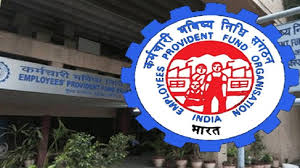Schemes under the National Pension System (NPS) will soon have ratings that will inform investors about the level of risk involved in a particular scheme that they are opting to invest in. The Pension Fund Regulatory and Development Authority (PFRDA) has issued a circular that asks fund managers to assign ratings indicating six levels of risk.
“Schemes of the National Pension System (NPS) are becoming an important asset for investment for long-term saving of the individuals and help in creating a desired corpus for pension, if invested in an informed manner. The investment under various asset classes of the Schemes of Pension Funds would involve different level of risks for subscribers and, therefore, it is desired that the adequate disclosure of the risks involved in various schemes of NPS are made available for awareness of the subscribers,” the PFRDA has said in the circular.
Read More:-Ford India workers’ sit-in protest moves into day 4, employees seek better severance package
By knowing the risk profile of the schemes/ asset class, the subscribers at the time of making investments may make an informed decision on allocating their contribution to various asset classes schemes at the time of enrolment into the scheme and at the time of making subsequent contributions to the schemes.
Schemes Under the NPS
In the National Pension System, there are multiple pension fund managers and investment options (auto or active). It has four asset classes — equity (E), corporate debt (C), government bonds (G) and alternative investment (scheme A). Schemes under each of the classes has two tiers. The subscriber first selects the fund manager, and then he/she has an option to select any one of the investment options.
Read More:-NCM urges Indian Railways to halt trains at Kiratpur Sahib for Sikh pilgrims’ benefit
Risk Ratings Under NPS
The PFRDA rules have outlined six levels of risk — Low Risk, Low to Moderate Risk, Moderate Risk, Moderately High Risk, High Risk, and Very High Risk. The new rules will become effective from July 15.
Based on the scheme characteristics, pension funds shall assign risk levels for the Schemes E-Tier 1, E-Tier 2, C-Tier 1, C-Tier -2, G-Tier-1, G- Tier-2 and Scheme A, according to the circular.
It added that within 15 days after the closing of each quarter-ending month, risk profiling will be posted on the respective pension funds’ websites under the ‘portfolio disclosure’ section.
Read More:-Infosys Shares Drop Post Analyst Meet But Analysts See 60% Rally in Future; Know More
Risk profiling will be evaluated on a quarterly basis, and any changes in risk profiles will be updated on the pension funds’ website under the ‘portfolio disclosure’ section. Pension funds will disclose on their websites the risk level of schemes as of March 31 of each year, along with the number of times the risk level has changed over the year.
This circular will be in effect for all existing schemes in categories E, C, G, and A as of July 15, 2022. However, before the effective date, Pension Funds may choose to accept the provisions of this Circular.
Tier 1 and Tier 2 Under NPS
There are two types of NPS accounts — Tier 1 and Tier 2. Tier 1 account is mainly meant for retirement savings where one has to make a minimum contribution of Rs 500 while opening the account. It also entails tax benefits under Section 80CCD (1B) of the Income Tax Act, 1961.
Read More:-This Maharatna Stock Surges Post Q4 Results, Shares Jump 84% In 1 year; Should you Buy?
Under the NPS Tier 1, a person is allowed to withdraw 60 per cent of the accumulated corpus contributed during his/ her working years at the time of retirement, which is tax-free. The remaining 40 per cent is converted into an annuatised product.
NPS Tier 2 is an open-access account with a minimum investment of Rs 1,000, where the subscriber is free to withdraw his/ her entire corpus at any point in time. No tax benefits are available in this account.




































